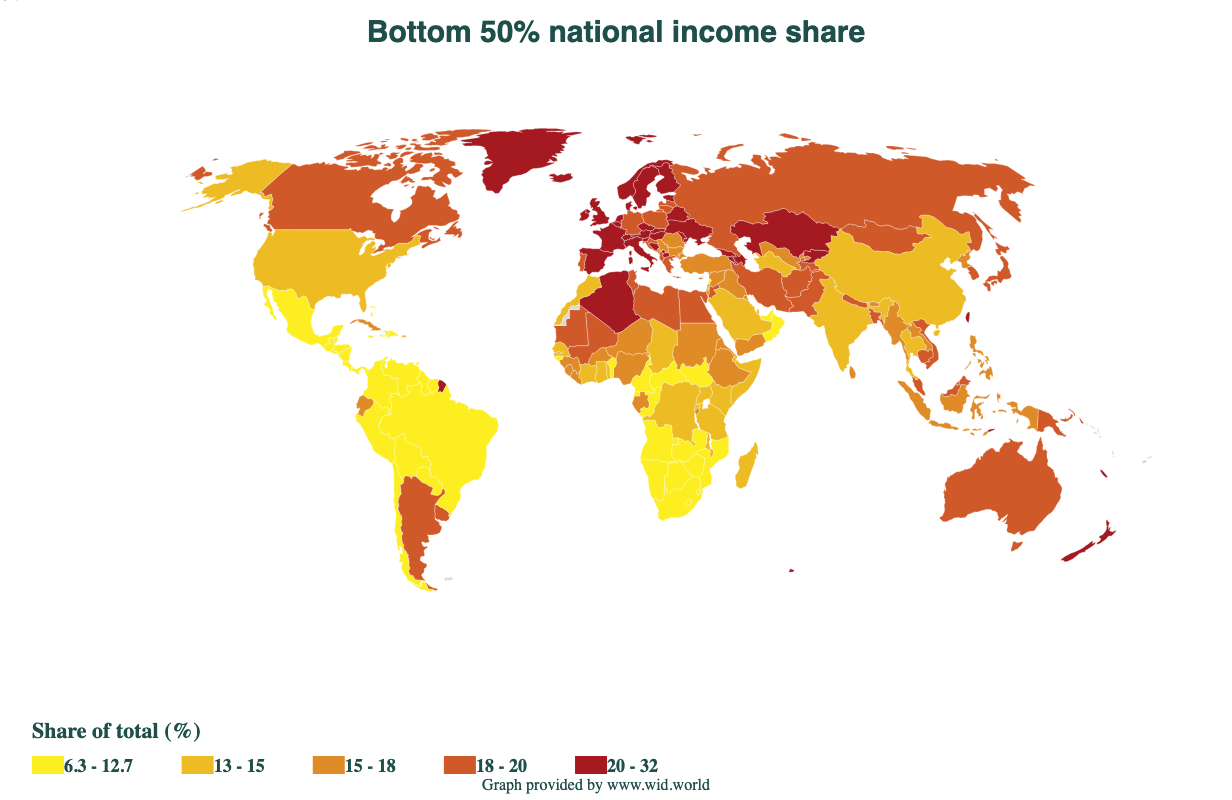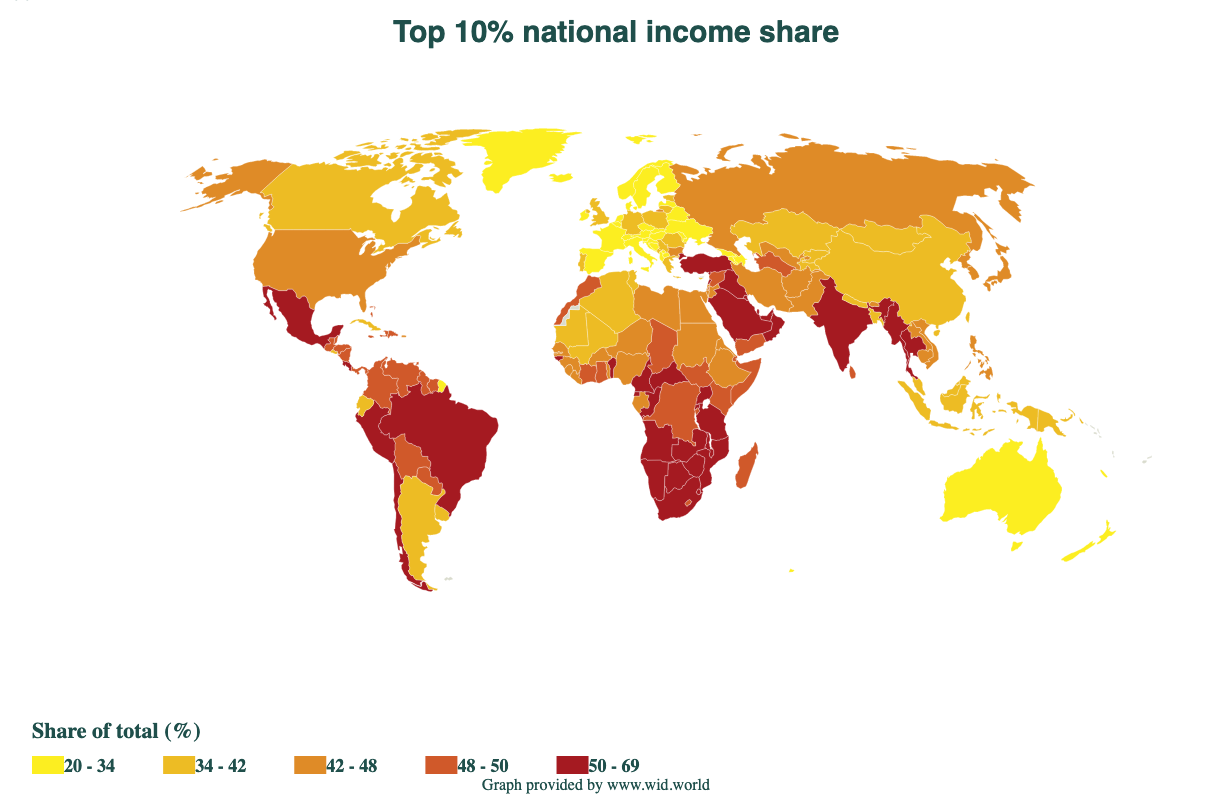Thanks to the combined efforts of 150 researchers from all continents, the World Inequality Database (WID.world) has just put new data online on the distribution of income in the different countries of the world. What does it tell us about the state of global inequality? The main innovation is that the data collected make it possible to cover almost all countries. Thanks to research carried out in Latin America, Africa and Asia, 173 countries representing 97% of the world’s population are now covered. The new data also makes it possible to analyse for each country the detailed evolution of the overall distribution, from the poorest to the richest. In concrete terms, we already knew that the widening in inequalities has been made at the top over the last few decades, with the well-known
Topics:
Thomas Piketty considers the following as important: in-english, Non classé
This could be interesting, too:
Thomas Piketty writes Regaining confidence in Europe
Thomas Piketty writes Trump, national-capitalism at bay
Thomas Piketty writes Democracy vs oligarchy, the fight of the century
Thomas Piketty writes For a new left-right cleavage

Thanks to the combined efforts of 150 researchers from all continents, the World Inequality Database (WID.world) has just put new data online on the distribution of income in the different countries of the world. What does it tell us about the state of global inequality?
The main innovation is that the data collected make it possible to cover almost all countries. Thanks to research carried out in Latin America, Africa and Asia, 173 countries representing 97% of the world’s population are now covered. The new data also makes it possible to analyse for each country the detailed evolution of the overall distribution, from the poorest to the richest.
In concrete terms, we already knew that the widening in inequalities has been made at the top over the last few decades, with the well-known rise in the numbers of the richest 1%. The innovation is to propose a systematic comparison of the situation of the poorest classes in different parts of the world. It can be seen for instance that the share of the poorest 50% varies considerably from country to country: it varies between 5% and 25% of total income. In other words, for the same national income, the standard of living of the poorest 50% can vary by a factor ranging from 1 to 5. This underlines the urgent need to go beyond GDP and macroeconomic aggregates to focus on concrete social distributions and groups.
It should also be noted that inequalities are high in all countries. The share of the richest 10% represents between 30% and 70% of total income. It is always significantly higher than that of the poorest 50%. The gap would be even greater if we looked at the distribution of wealth (what you own) and not income (what you earn in a year). The poorest 50% own almost nothing (usually less than 5% of the total), even in the most egalitarian countries (such as Sweden). However, the data available on wealth is still insufficient and will be updated in 2021.

With regard to income distribution, there are very wide variations between countries, including within a given region and at the same level of development. This shows that different policies can make a difference. In Latin America, for example, Brazil, Mexico or Chile have historically been more unequal than Argentina, Ecuador or Uruguay (where more ambitious social policies have been implemented for several decades), and the gap between these two groups of countries has widened over the past 20 years. In Africa, the most extreme inequalities are in the south of the continent, where no real redistribution of land and wealth has taken place since the end of Apartheid.
In general, the map of global inequality reflects both the effects of long-standing racial and colonial discrimination and the impact of contemporary hyper-capitalism and more recent socio-political processes. In several of the world’s most unequal countries, such as Chile or Lebanon, social movements in recent years hold out hope for profound transformations.
The Middle East appears to be the most inegalitarian region on the planet, both because of a system of borders concentrating resources on petro-monarchical territories and because of an international banking system which allows the transformation of the oil rent into an eternal financial rent. In the absence of a new, more balanced, social-federal and democratic model of regional development, it is to be feared that the totalitarian and reactionary ideologies currently at work will continue to occupy the field, as in Europe a century ago.
In India, where the gap between the top and the mass of the population has reached levels not seen since the colonial period, Hindu nationalists believe they can alleviate socio-economic frustrations by stirring up identity and religious tensions, resulting in increased discrimination faced by the Muslim minority, which is threatened with long-term impoverishment and marginalisation.
There has also been a steady rise in inequality in Eastern Europe since the 1990s. At the fall of communism, the inequality shock had been much more brutal in Russia, which in a few years has become the world capital of oligarchs, tax havens and financial opacity, after having been the country of the total abolition of private property. But almost 30 years later Eastern Europe seems to be gradually approaching the level of inequality observed in Russia. The stagnation of wages and the scale of the flow of profits out of these countries are fuelling a frustration that the West of the continent finds hard to understand.
At the global level, the share of the world’s poorest 50% of the world’s population has clearly increased from 7% of total world income in 1980 to around 9% in 2020, thanks to the growth of emerging countries. However, this progress must be put into perspective, as the share of the world’s richest 10% has remained stable at around 53%, and that of the richest 1% has risen from 17% to 20%. The losers are the middle and working classes of the North, which is fuelling the rejection of globalisation.
To sum up: the planet is criss-crossed by multiple unequal divides, which the pandemic will further aggravate. Only an increased effort of democratic and financial transparency, which is currently very insufficient, would make it possible to develop solutions acceptable to the greatest number of people.
